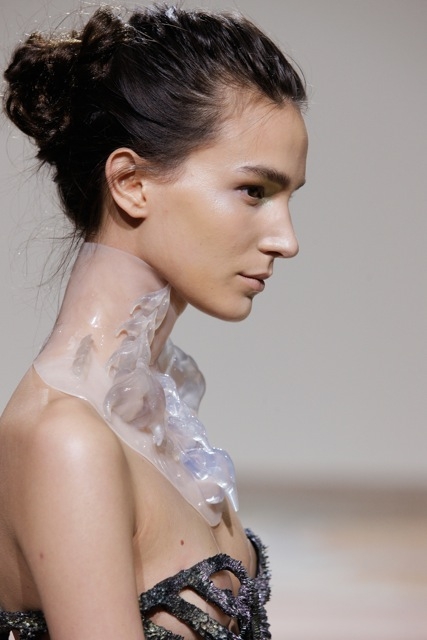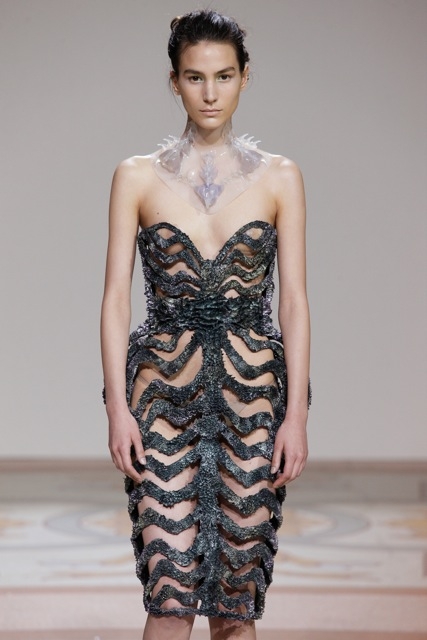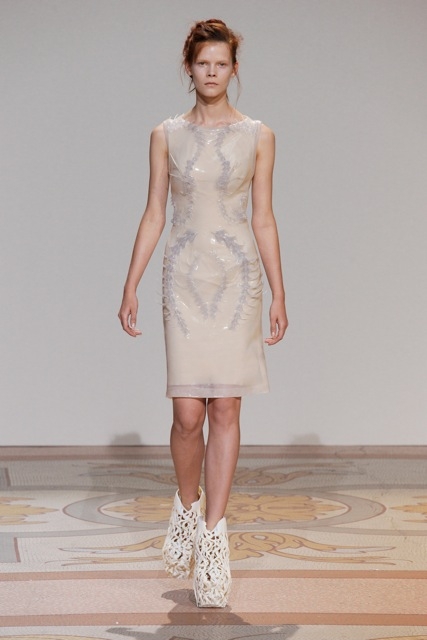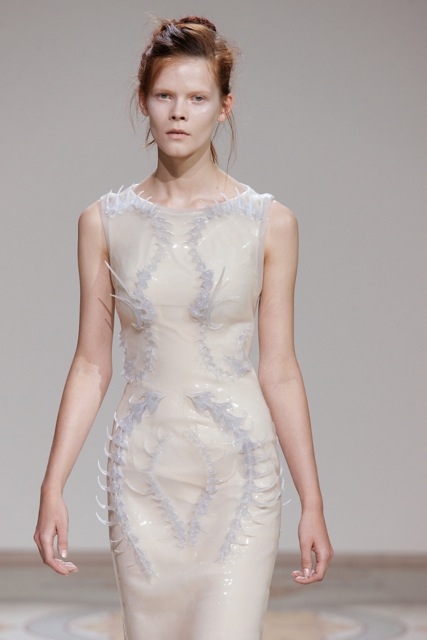Iris Van Herpen: normal rules don’t apply

With many innovative interdisciplinary collaborations from a wide range of artists already under her belt, Iris van Herpen is no stranger to pushing the boundaries of Haute Couture.
Her most recent collection in collaboration with Dutch architect, Isaie Bloch, was unveiled during Paris Fashion Week. Van Herpen and Bloch used cutting edge MGX 3D printing technology from Belgian company Materialise to bring the nature-inspired designs to life.
Materialise, now a leader in 3D printing, started out as a university project concentrating on modelling the human anatomy from CT scans. EU funding helped build the company’s research, allowing it to branch out into different sectors such as design.
Initially designed on a computer, the garments were realised using UV lasers that scanned the image into a liquid resin, setting it on contact with the laser, creating pieces that are both seamless and made to measure.
The collection, entitled Wilderness Embodied, actualises Van Herpen’s ethos of “combining fine handwork techniques with futuristic digital technology”. The crowning piece being a hybrid dress which features fine bone-like structures created using the 3D printing technology over-moulded by hand with silicon.
The shoes adorning the feet of the runway models at the showcase were designed by Van Herpen’s repeat collaborator – Rem D Koolhaus, founder and creative director of architecturally influenced shoe brand United Nude. The 3D printing technology enabled the construction of the intricate, interlacing root-like structures that wove around the feet designed to mimic the twisting of growing tree roots, which Van Herpen explains, “Would simply not have been possible with any other manufacturing technology.”
As Van Herpen pointed out, 3D printing technology allows the creation of geometric shapes and forms unattainable from traditional manufacturing methods. Although Van Herpen is very much still the name at the forefront of 3D printing in fashion design, perhaps helped by the recognition she has gained from popular influential artists such as Björk and Lady Gaga, retail prices for 3D printed garments are becoming more commercially viable making the technology more accessible for all.
Sarah Louise Renwick
For more about Iris Van Herpen see here.
For more about Materialise click here.

























Facebook
Twitter
Instagram
YouTube
RSS